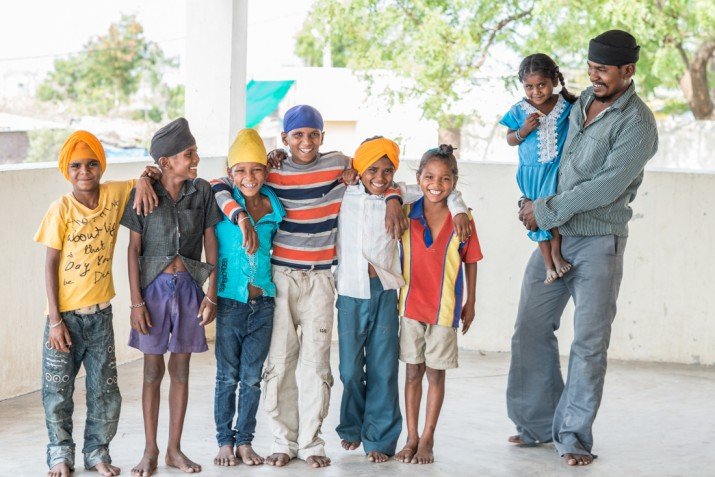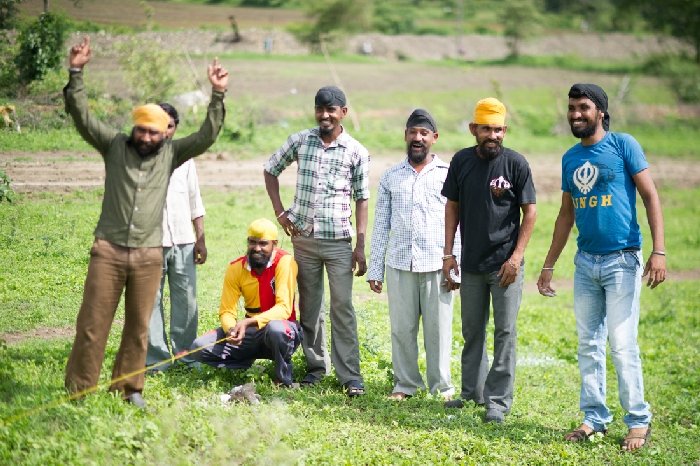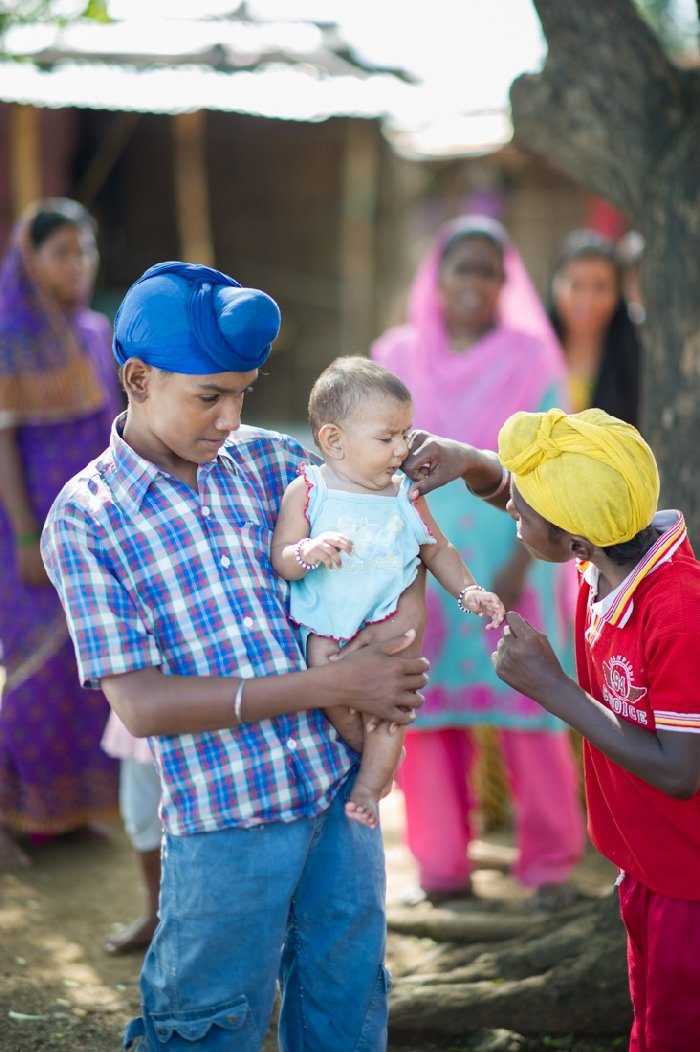
14 years ago an article in a UK newspaper on the pitiful condition of Sikligar, Vanjara and Satnami Sikhs in India spurred Kulwant Singh Dhesi and Tarsem Singh Deol into action. A genetic imprint in the Sikhs urges them to take up cudgels for the underprivileged and oppressed. Kulwant Singh and Tarsem Singh collected like-minded individuals and founded British Sikh Council UK in 2002. Trips to India followed. Two Indian states, Maharashtra and Madhya Pradesh, were identified with a sizable population of Sikligar, Vanjara and Satnami Sikhs. Initial forays into the field revealed alarming levels of poverty, lack of sanitation, abysmal health and education facilities. Yet, what shone through was a staunch belief in the Sikh value system. Hair was maintained unshorn; youngsters risking ostracisation if the Guru's mohar was not respected.
Malkit Singh Bal, President, Gurmat Parchar Sanstha (Nagpur) and Gurcharan Singh, Coordinator in India (BSC), joined ranks with the UK natives and the first Gurdwara was constructed in 2003 at Warud, Maharashtra. 10 more Gurdwaras were constructed in Maharashtra. One school and two Gurdwaras were constructed in Aaron (district Guna) and Mathana (district Ashok Nagar) in Madhya Pradesh. Other organizations like Scottish Sikh Council came on board to assist with construction of homes and the tribal Sikhs emerged out of their shanties to move into a life of dignity. The transition has been fascinating. These Sikhs bring their color and vitality to the larger community thereby invigorating the Sikh ethos. Their language, customs, lifestyle and skill should be respected and preserved. British Sikh Council has achieved remarkable success in the last 12 years. The sangat of Europe has contributed and its largesse has made this transition possible. Local governments had marked the tribal Sikhs as denotified tribes and their weapon making skills occasionally put them on the wrong side of the law. Intervention by British Sikh Council UK and able chaperoning by Malkit Singh Bal has encouraged the tribal Sikhs to educate their children and explore better job options. Change is happening but there is lots more work to be done.
 |
 |
 |
 |
 |
 |
 | ||
| Young Sikligar Sikh Children | ||
 |
| Clothes Dausa |
 |
| Jaikara |
 |
| Kulwant Singh Dhesi |
 |
| Langar At Wardha |
 |
| Next Generation |
 |
| Ramti Girls |
 |
| Skill at Metalworking |
 |
| Thanegaon Gurdwara |
 |
| Wardha Gurdwara |
Website of the Council is www.britishsikhcounciluk.org and contacts are:
Your donations are highly valued.
|
SIKLIGAR SIKHS constitute that section of lohars or ironsmiths who once specialized in the craft of making and polishing weapons. Sikligar is derived from Persian saql, lit. polishing, furnishing, making bright (a sword), the term saqlgar meaning a polisher of swords. In medieval India, Sikligars were in great demand for manufacturing spears, swords, shields and arrows. Some of them later learnt even to make matchlocks, muskets, cannon and guns. Traditionally treated as of a low caste, Sikligars first came in contact with Sikhism during the time of Guru Hargobind (1595-1644) who had initiated the practice of arms among Sikhs. The advent of modern weapons and industrial technology has hit the Sikligars hard economically. Engaged in the pursuit of an obsolete occupation, they are now a poor and backward people forming one of the scheduled castes as defined under the Indian Constitution. Also known as gaddi-lohars they roam about in small groups carrying their meagre possessions on specially designed carts (gaddi, in north Indian dialects) and making and selling small articles like knives, sickles, betel-nut cutters, sieves, locks, buckets and toys which they manufacture from waste-metal. Sikligar Sikhs of Central and South India have great faith in Takht Sachkhand Sri Hazur Sahib at Nanded, which they visit regularly. On the annual Takht ishnan (lit. bath ceremony) at the Takht Sahib, it is the special privilege of Sikligar Sikhs to clean and oil the old weapons preserved there as sacred relics. VANJARA SIKHS or Banjaras, akin to Labana Sikhs of the Punjab, are found scattered throughout Central and South India as well as in Uttar Pradesh and Rajasthan. Vanjaras came into the Sikh fold quite early during the time of the Gurus. SATNAMI is one who believes and worships only the True Being and as such every Sikh is a Satnami. However, the term has been adopted by at least three religious bodies - the Sadhs, second one founded by Jagjivan Das (a Kabirpanthi)of Sardaha in Bihar and third founded by Ghasi Ram in the Chhattisgarh area. |
